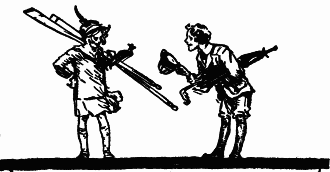Desert Island Discussions
At Vanity Fair, culture blogger Bruce Handy and New Yorker cartoon editor Bob Mankoff discussed the enduring popularity of the desert island cartoon well after people stopped being stranded on desert islands. I recall sketching one myself back in college, which just shows how common a trope they are.
Mankoff implies that such cartoons wouldn’t have seemed so funny back when sailors were really being stranded on unmapped shores. During the Age of Sail desert islands produced adventures like Robinson Crusoe, Gulliver’s Travels, Treasure Island, The Swiss Family Robinson, The Coral Island, Haakon Haakonsen, and more.
Lord of the Flies (itself a rewrite of Two Years’ Vacation) and John Dollar (a response to Lord of the Flies, and set nearly a century in the past) might be the last of that literary line. What remains are lifeboat sagas (Life of Pi) and science fiction that replicates the same situation off-Earth.
In the 1930s, when the cartoon genre seems to have become entrenched, the situation was still close enough for people to picture Amelia Earhart surviving for years on a Pacific island. Since then, Mankoff said, the database of New Yorker cartoons (360+ examples) has shown a pronounced change in the realism of desert-island cartoons:
The original ones were more about isolation from the strictures of society, especially the moral strictures of the time. If a man and a woman were on the island in the 30s or 40s, the cartoon probably has a sexual content. The woman might be asking the man, “How can I be sure you’re a millionaire?”Curiously, castaway movies are still going strong.
Then, later, the cartoons represent different things, mostly just isolation. And eventually they just represent the cartoon trope, if you will. For instance, I did a cartoon in the 80s that has a man on a desert island thinking, “No man is an island, but I come pretty damn close.” And he’s tiny, and the island is tiny. And that’s one of the interesting things that happened over the years, that it’s not a real island anymore. Originally it was a real island. Now it’s more the idea of an island, an icon. . . . And also now the jokes tend to be almost completely self-referential.













